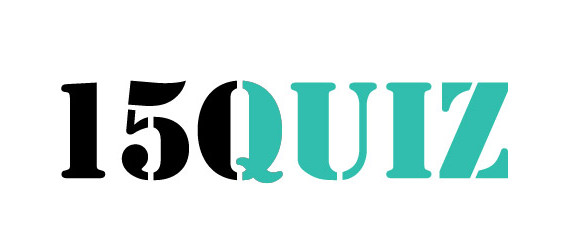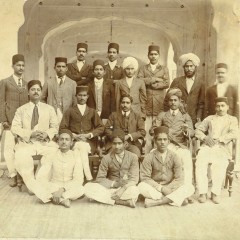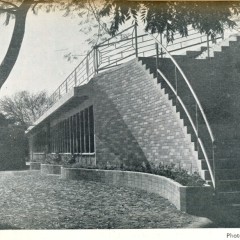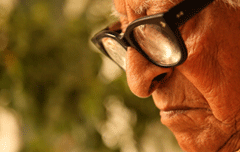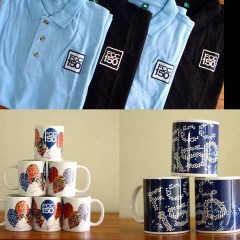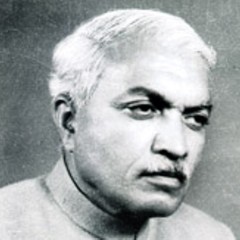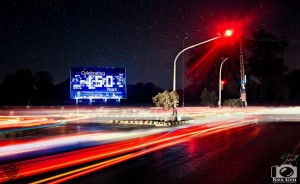Random Reflexions of a Formanite (1911-13)
By Dr K L Moudgill MA (Cantab), DSc (Glasgow), DSc (Travancore) Deputy Director (Chemicals) Indian Standards Institution Following my three brothers who had graduated from the Forman Christian College, I joined in 1911 and studied there for two years. The Ewing era had blossomed to its height and the Forman College dominated the educational filed in Lahore. The Government College was there, but generally sore that the Formanites used to steal the thunder in the Punjab University. The cricket and the football trophies had been won by our Alma Mater and re-donated, with the name of the college coupled with that of the original donors as a proof of its prowess in the playing fields. In our days, Dr J. C. R. Ewing was sometimes spoken of as Jhelum Chenab Ravi Ewing. Did this rather childish invention of the undergraduate mind in some manner foretell the final destiny of the college? Of the five rivers of the Punjab (not to speak of the mighty Indus) the College now bestows its special benefits to the youth nurtured on the soil fertilized by the three whose names were misquoted as the initials of the famous Principal. Dr Wilson was then young, in fact very young. Dr Lucas had married Miss Nancy Ewing and, otherwise, established himself as the coming leading light of the College. Mr Samuels Lall was an ardent admirer of the quiz system by which he used to give black marks to errant youth who could not prove the Binomial Theorem on the class blackboard when called upon to do so without notice. Later, after his illness, he became much too mild and managed to get more work done by his loving ways than the terror of his black mark system. Dr Griswold was another saint whom all students loved, though they concocted numerous stories about his absent-mindedness. Mr Benade joined as a Professor. I sat in his classes sometimes. At other times, he thought I was there! Horrible confession, perhaps! Mechanics, the subject dreaded and shunned by the Intermediate students, was the only part of Physics that had not been covered by Dr Flemming, Mr Benade’s predecessor. Instead of attending lectures, the approaching University Examination lured us to the calm and quiet of the Lawrence Gardens where we prepared for the Examination on a sumptuous mid-day meal of bhatooras, ganderis and oranges. The sophisticated modern term “Luncheon” was not known in those days and “Tiffin” was eaten only by Sahib Lok. But I suppose the youth of today is no different from what it was in my days. It may be said to Mr Benade’s credit that he always...
1963: The Controversial Student Centre
The Lucas Centre is so much a part of the life of FCC students nowadays, that they probably don’t realize that its architecture was a source of controversy when it was first built in 1963. The following is an extract from an article by faculty member Mr Stanley E Brush: The structure nearing completion (as of early February, 1963) in the physical education sector of the Forman Christian College campus has the distinction of having been praised and condemned already in the strongest terms possible by the large number of amateur critics who have observed the growth of the building. Adverse reactions go so far as to compare it with a third class waiting hall or a stable. Favourable comments are inclined to reflect as unrestrained a response on the other side. It would be safe to say, at the least, that the appearance of the building has not passed unnoticed. The concept of the Lucas Student Centre originated in the Report of the Commission on National Education with its emphasis on the need for developing facilities for students on a larger scale than has hitherto existed. The willingness of the Government of Pakistan to make funds available made it possible to bring this multipurpose building into existence, while the creative planning and design of the Engineering Department of the United Christian Hospital, under the guidance of its head, Mr Le Young, gave form to the vaguely conceived ideas of the college planners. The movement from concept to completion is almost finished. Mr Young has designed a building that provides the Physical Education Department with an outdoor gymnasium, playing court, shower and locker rooms and an office. Part of the building houses community service facilities, such as barbering, tailoring, cycle repairing and a book and stationery shop. Refreshment rooms will be confined to a tea shop and fruit shop for the present, although further expansion is possible which would include a full cafeteria system dining room and kitchen. Student and staff lounges and further office space are included. Finally, the roof has been designed as a tiered stadium for both the athletic playing field in front of the Centre and the enclosed gymnasium within. Lighting has been provided for night games and functions. The design of the Centre is the major point of controversy. The person who has seen the building may be somewhat startled by the claim that the design does conform to the standard set by Mughal architecture and follows some of its major principles, if these are accepted as consisting of a sense of austerity, formality, balance, colour and, finally, the architectural value of sincerity. With...
Remembering F E Chaudhry
Faustin Elmer Chaudhry’s Pakistan from Mazhar Zaidi on Vimeo Born on 15 March 1909, F E Chaudhry, also known as Chacha Chaudhry, was an acclaimed photojournalist of Pakistan. He passed away at the age of 104 on 15 March 2013. He studied at Forman Christian College, Lahore from 1928-1932. Acclaimed photographer, Faustin Elmer Chaudhry, colloquially known as Chacha, passed away on his 104th birthday on Friday, March 15th 2013. He met a silent and peaceful death, at the home of his eldest son, Cyril, just a few hours before he was set to meet his friends for birthday celebrations at the Cosmopolitan Club. Regarded as the pioneer of photo journalism in Pakistan, Mr Chaudhry began his career as a freelance photographer while teaching science at St Anthony’s School in Lahore. He wasn’t just a photographer; he was a historian, a pictorial historian if one could say. Before he photographed some of the most valued historical moments of the Pakistan Movement, he had already worked in such illustrated publishings as Civil and Military Gazette, Illustrated Weekly of India, Statesman, Bombay and others. His works inspired not just one generation of photographers, but a stream of generations that took to his pioneer skills, innovative ideas, and excellent shot capturing mastery. Along with his lasting impressions on the Pakistan Movement, he is also credited to have introduced innovative features to photojournalism. Many would proudly say that his unique style in sports photography, nature shots, including the flora and fauna of his homeland, his artistic captures of cultural scenes and many others have become a yardstick in Pakistan’s photojournalism of today. He documented important events such as the Muslim League Session in 1940 and Quaid-e-Azam’s visits to Lahore. After contributing to a few periodicals and newspapers and establishing that he was gifted, Mr Chaudhry was invited by Mian Iftikharuddin to join The Pakistan Times. Chaudhry’s photographs mapped the journey and growth of a nation through its highest and lowest points – the times of Jinnah, the political uprisings during Ayub’s military takeover, Bhutto before his execution. He received a number of coveted awards from the government, such as the Tamgha-i-Khidmat, Sitara-i-Imtiaz and Pride of Performance, in recognition for his contribution to Pakistan. This article was printed in Pakistan Today on 18 March 2013, retrieved from http://www.pakistantoday.com.pk/2013/03/18/comment/editorials/f-e-chaudhry/ The video was taken from Vimeo, retrieved from http://vimeo.com/18736290 Photograph retrieved...
More FCC 150 merchandise available
The Dean of Students Office and the Advancement Office have had special merchandise made for FCC’s 150th Anniversary. The Dean of Students Office is currently selling mugs for Rs 200 each. The mugs have been designed to represent traditional fabrics and crafts from different areas of Pakistan. The Advancement Office is selling FCC 150 mugs for Rs 200 each. They are also selling polo shirts in blue and black colors (sizes small, medium and large). The shirts are available at a promotional price of Rs 350 until the end of this month. Following that, the shirts will be sold at their regular price of Rs 500. ...
The Making of a Revolutionary: Durga Das Khanna
For Durga Das Khanna, former Chairman, Punjab Legislative Council, the urge for freedom was sufficiently strong to take him quite close to the gallows. In 1931, he was sentenced to death by the Lahore Sessions Judge for his part in the conspiracy to assassinate the Governor of Punjab. He was acquitted later by the High Court. Scion of an orthodox family, Khanna became very close to Bhagat Singh and Sukhdev. In an interview recorded by the Nehru Memorial Library, eight years before his death in 1984, he describes how he was induced to give up his conservative moorings and drawn into the revolutionary band that sought to end the British rule in India by use of force: I belong to a family which had no political background. It was an orthodox Hindu family. I was born in 1908. My father and grandfather were doing money-lending business. One of my uncles was a senior advocate of the Lahore High Court. My reaction to the profession my father and grandfather were engaged in was rather adverse right from childhood. I remember people coming and being advanced all kinds of amounts and paying high rates of interest and I always used to wonder if my family was not living on the wants and miseries of others. This created almost a revolution in my mind, but I thought it wiser to keep my counsel to myself, though once or twice I did argue with my grandfather why he could not give up the profession. He said that this was something done not only by him, but by so many others and that it was a traditional way of helping people to carry out their needs. I had a religious bent of mind from the very beginning. My one attraction was the Guru Granth Sahib, which my father used to read daily. I began to visit the gurdwara, opposite Lahore Fort, which had been established in the memory of Guru Arjan Dev. Somehow of all the 10 gurus of the Sikhs, Guru Arjan Dev impressed me the most and I would go there every Sunday and listen to the bani [Sikh holy texts]. When I passed my matriculation in 1924 I applied to two colleges — Government College, Lahore, and Forman Christian College. I was not admitted in Government College and I am glad I was not. In FC College I found a very free atmosphere. The Principal, Dr E D Lucas, was a wonderful man and if I can think of the first influence on my mind about the national movement, it was from him. This, of course, does not take into account...
Winner of March 150 Quiz: Muhammad Adeel
Congratulations to Mr Muhammad Adeel (roll number 14-29002) MPhil Biotechnology for scoring the highest number of points in the March 150 Quiz. Mr Muhammad Adeel got all the answers right. His score was followed closely by those of Moazzam Anees Khan Lodhi and Nimra Nazar. Please contact the Communications Office, N Block, Room 222, to claim your voucher. The next quiz will be announced on 2 April 2014....


